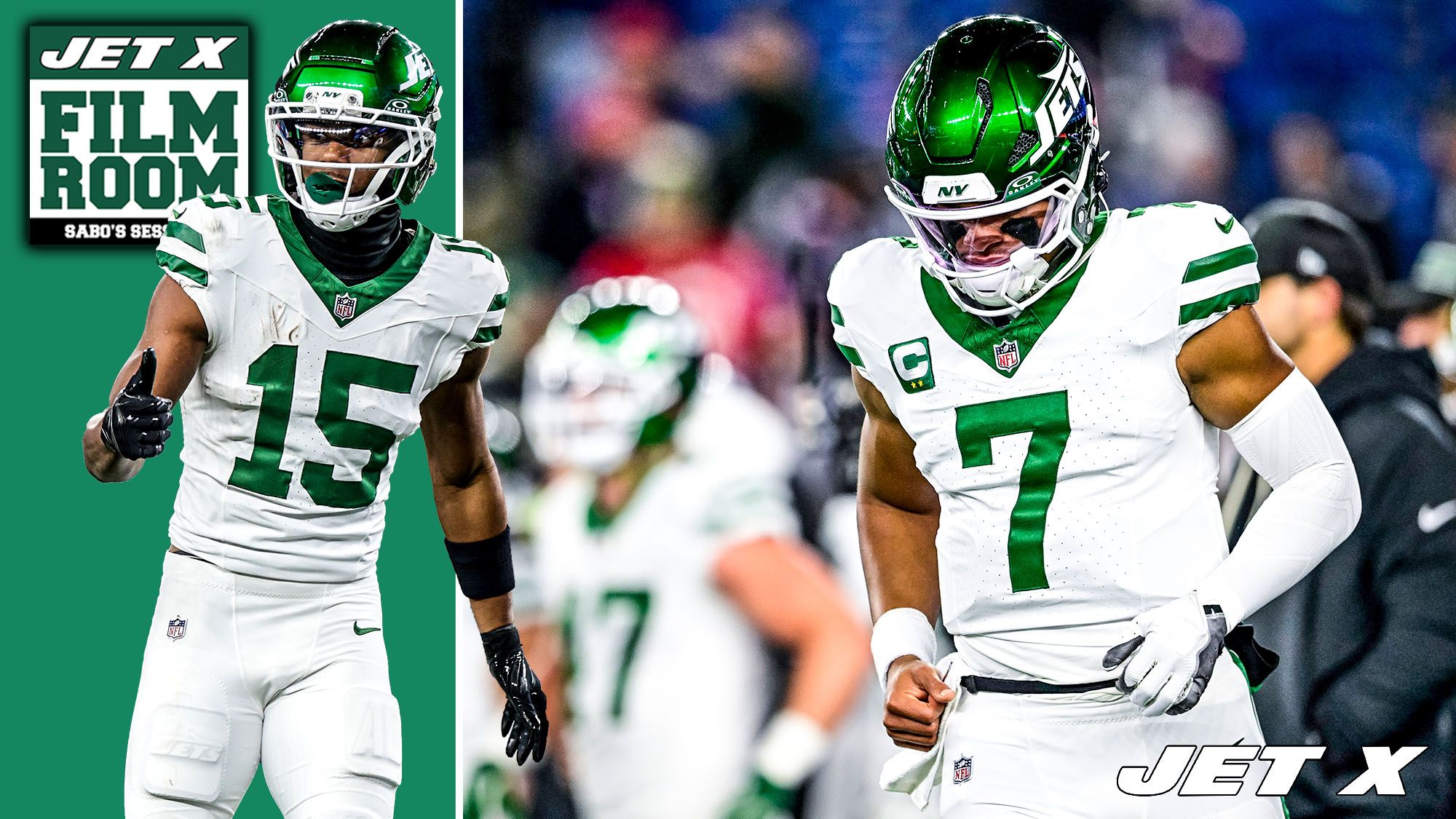Look, the New York Jets have officially turned the page, so nobody wants to pile on in an over-the-top and even malicious way. That’s not the goal here.
The Jets officially naming Tyrod Taylor their starting quarterback for this Sunday’s matchup against the Baltimore Ravens shouldn’t automatically wash away all evaluation opportunities of the past, either. Holding such views is akin to looking only forward and thus never providing oneself the chance to learn from the past.
With that spirit in mind, understand this: Justin Fields was even worse last Thursday night than everybody thinks.
Most of the rough-looking quarterback plays were easy to spot. The sluggish and deliberate pocket movement and releases, the inaccurate balls, and the failure to let it fly in situations he should are all easy to identify.
Perhaps it’s why even an average throw was celebrated in real time—and even after the fact.
AD Mitchell: Not the lone culprit
Jets newcomer Adonai Mitchell struggled in his debut. Suffering through a few drops didn’t do any of his teammates any favors, and it’s something the organization and fans will be closely monitoring from this point forward.
The Mitchell drop on the in-breaker across the middle was an ugly one. Granted, Fields put no touch on the ball whatsoever, but that doesn’t make up for the idea that Mitchell butchered the target.
However, not all drops are created equal. The glaring miscue from Fields to Mitchell on the slot-fade (slot-wheel) represents a much better throw than the one broken down further down on this page.
Fields recognized the coverage, targeted the right weapon, and, most importantly, put touch on the ball while leading the receiver into the correct area.
Yes, it goes down in the books as a drop, or an incompletion, but it’s not Mitchell’s hands that should be thought of as the main culprit. Instead, think of his route-running as the thing that let the Jets offense down.
Understanding just how much space there is between his location and the sideline, coupled with the defender’s leverage, means Mitchell has to get wider in a much quicker fashion. He also has to move wider while getting his head around quicker.
Had he done that, he would have provided his quarterback a much better opportunity to put it on him. Nonetheless, while the football world was screaming at Fields for his inaccuracy here, this play is a far better quarterback throw—courtesy of the placement and touch—than the real breakdown of the day (seen below).
Justin Fields wants to first see it open
Justin Field’s most glaring issue is the fact that he wants to see the target open before triggering. Yes, his release is slow, and yes, he’s extremely deliberate in the pocket as he goes through his progressions.
Those truths hurt his development at the professional level. However, what really hinders his ability to improve is his lack of anticipation and unwillingness to anticipate the open man.
The stutter-and-go down the left sideline features Fields’s wish to see the open man before releasing the ball. Grace must be provided, though, in that Fields and Mitchell are foreign to one another, which means double-moves are tougher to execute.
Despite fellow Ohio State product Kirk Herbstreit calling it a good pass on the Thursday night broadcast, it was anything but a good quarterback play. Sheesh, I even heard former Jets general manager Mike Tannenbaum raving about the pass on ESPN Radio NY with Jake Asman this past week.
Sure, the ball got there. Sure, Mitchell needs to catch it. But by no means was this a plus-throw.
Breaking it down
Nonetheless, cornerback Christian Gonzalez’s intentional leverage on this play made it a picture-perfect scenario for the quarterback to release the ball on time.
The coverage is easy to spot (particularly since this is what all NFL defenses do against Fields): single-high, press, some variation of Cover 1. Even in this third-and-management situation, that’s usually the case.
The first question would zero in on the solo-high safety: Would he have a chance to range over in time? Probably not, especially since Tanner Engstrand ensured he ran a vertical straight at him.
Next, can Mitchell cleanly get off the ball without contact? Despite the press look, can his speed release get the job done without contact?
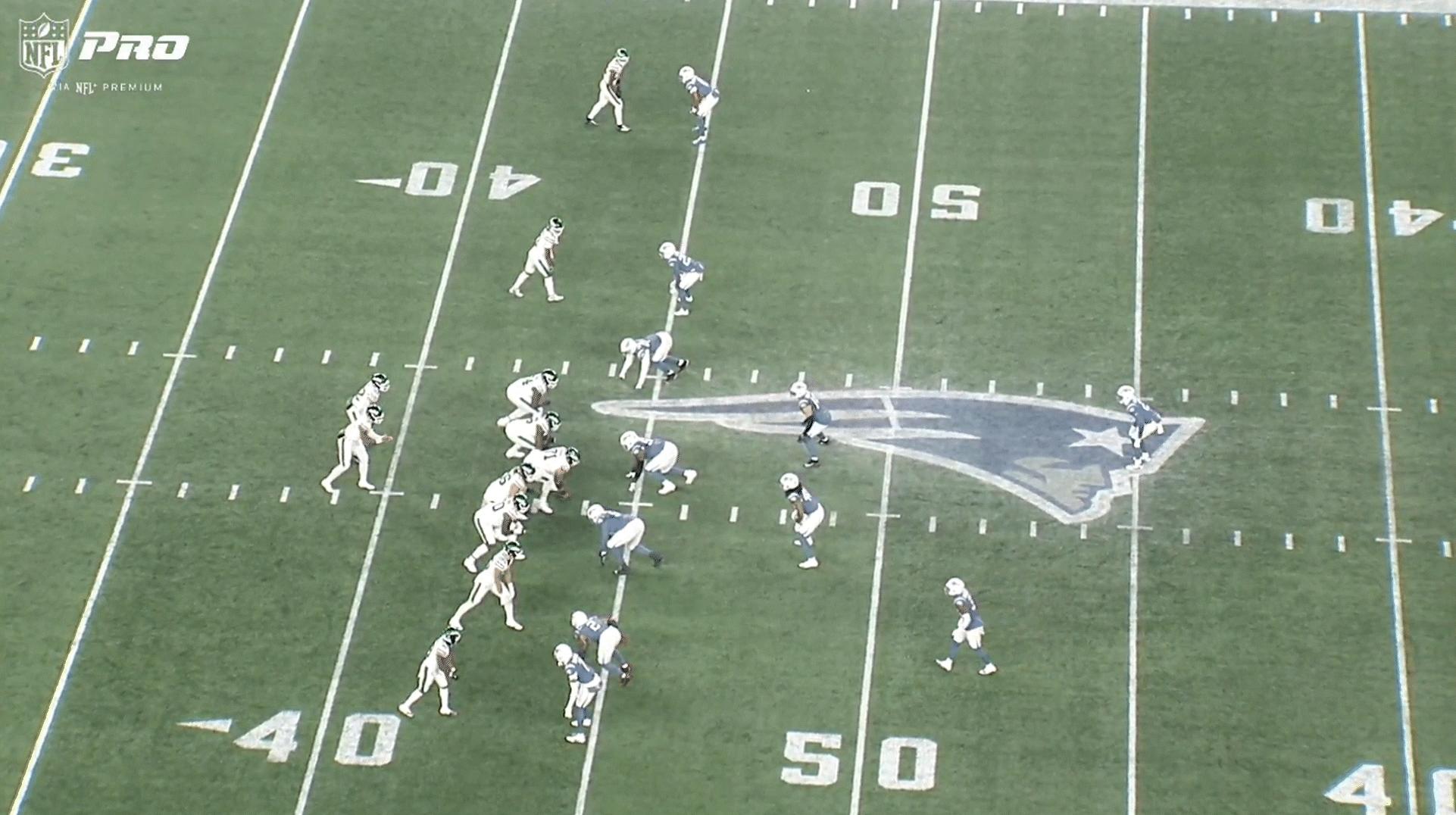
Next, understanding Gonzalez is not on top, a quick peek at the high safety is required. It appears that there’s no chance he’s ranging over in time, so the vertical is the obvious primary here.
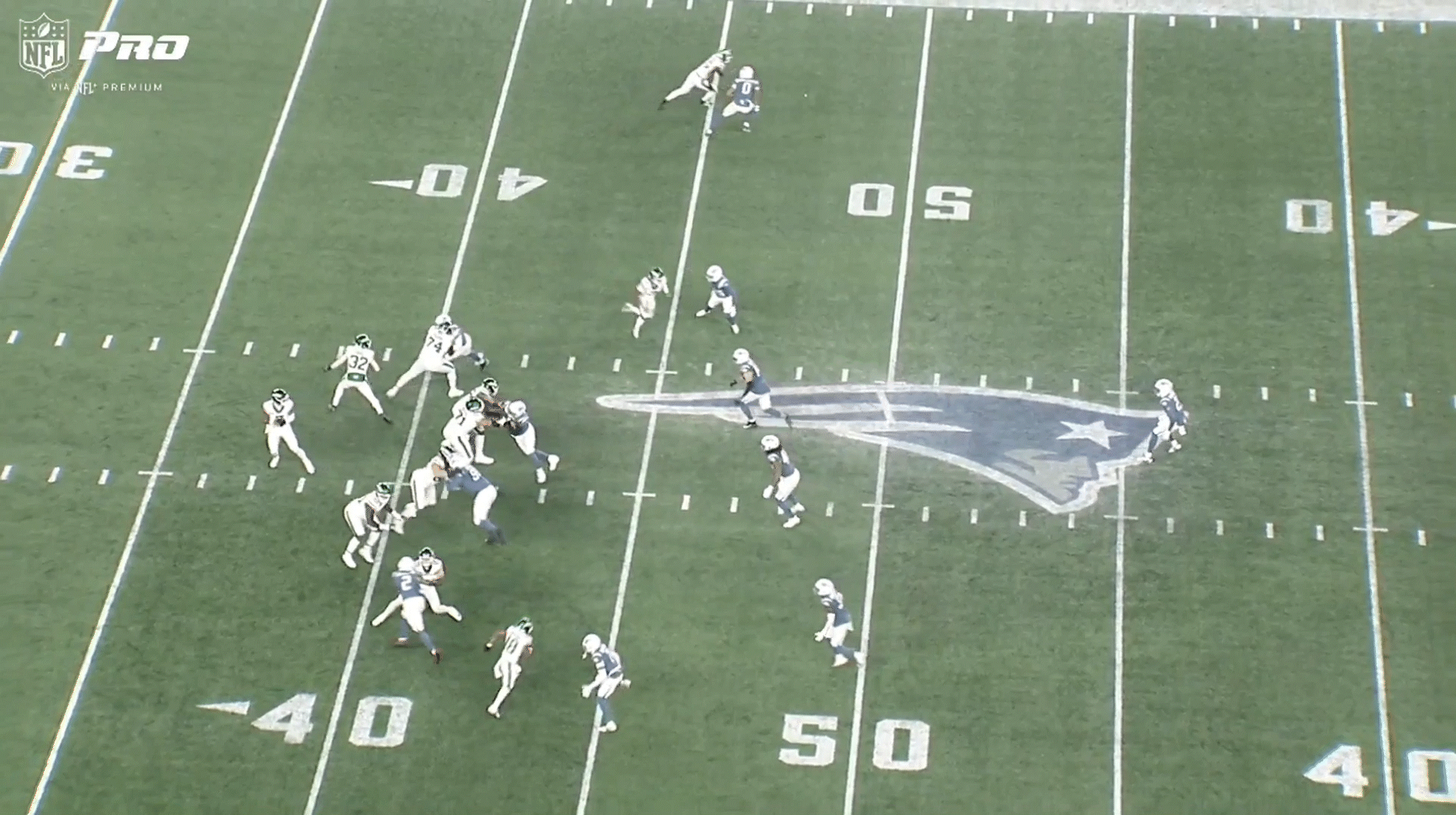
Against this coverage, Fields has the chance to release the ball with anticipation. All he has to do is trust himself, along with the receiver. Without the cornerback on top, it’s not a difficult ask.
Here’s a still of when Mitchell plants and goes (this is the point at which Fields could have been at the top of his release):

Instead, that’s the moment when the release is triggered. In other words, the release comes after he first witnesses Mitchell create separation:
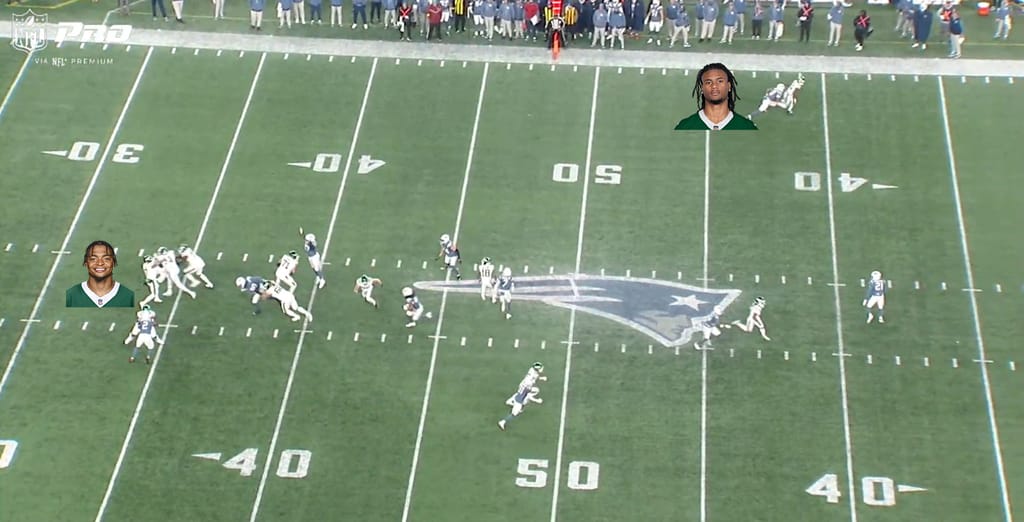
Yet, the quarterback shouldn’t need to see the receiver open first, especially in this situation. Gonzalez isn’t over the top, intentionally. Instructed by Mike Vrabel to stay even with inside leverage, it’s a game plan strategy against quarterbacks who are shy to throw the ball into any situation without a clear open man.
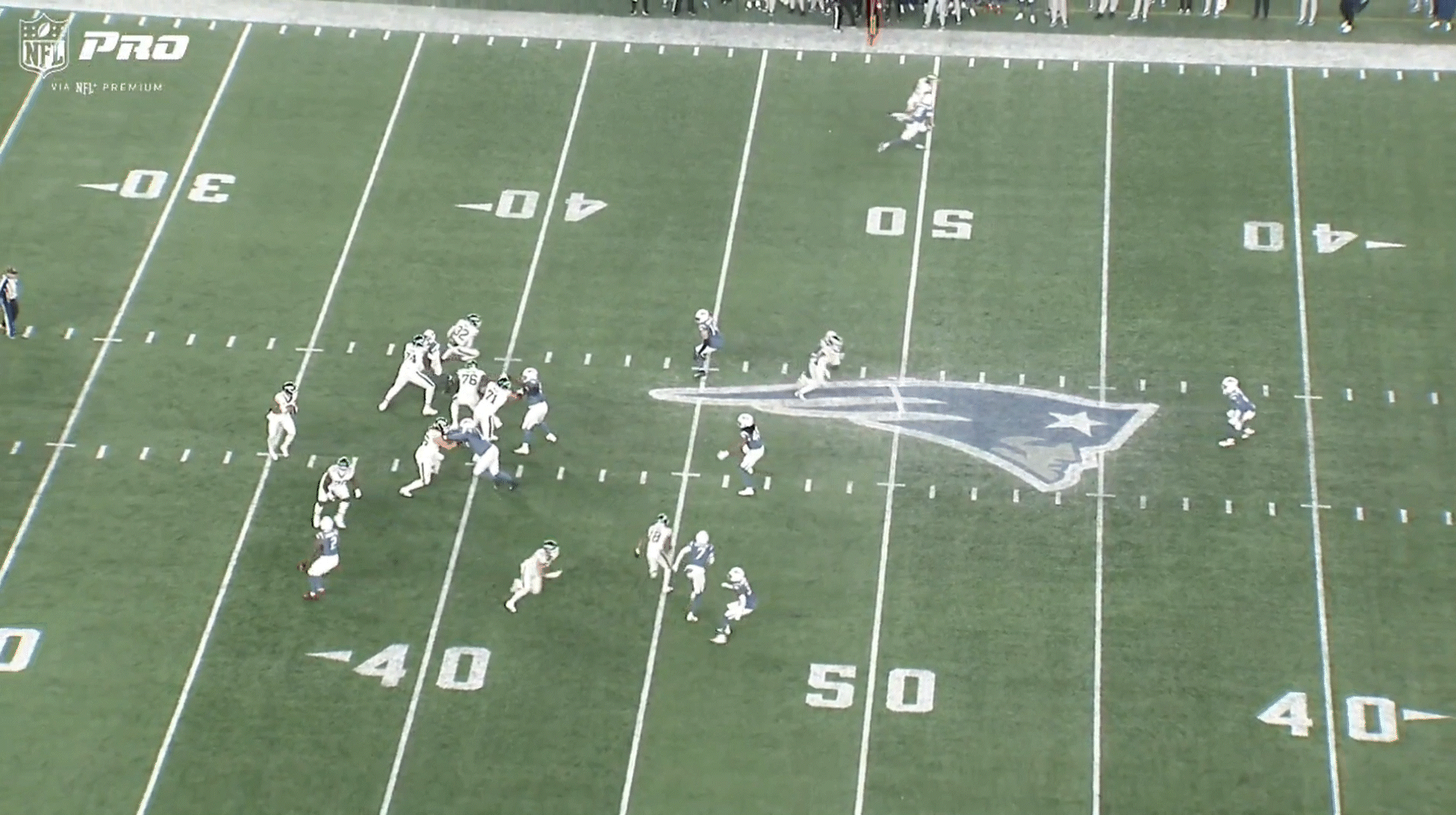
If the release point is more closely tied to Mitchell’s “go” action, the play has a greater chance of success. Nonetheless, even with the two not knowing each other too well, and even with the timing not completely perfect, Fields just needed to lead Mitchell more.
Had he done that, this would have been a walk-in touchdown.
Check out Fields from the end zone view. There’s just no reason to slide a tad left and bail out of the throw like this. He took a clean pocket and made it a bit messier for himself, moving into the left-side edge, as opposed to just standing tall and delivering the ball forward.
Watching a quarterback’s release—if it’s strong and straight ahead or flailing one way or another, even in a clean situation—provides tremendous insight into where the player’s head is currently.

The moment Mitchell broke back into his vertical route was the instant Fields should have been releasing the ball. Instead, he only triggered the release once he saw Mitchell beat Gonzalez.
The best that could be said about the throw is that it “got there,” and that he “gave him a chance to make a throw, while placing it on the correct shoulder (outside).”
Then again, there was no need to throw it to the outside shoulder—not in this situation (a double-move without a semblance of a chance of bracketing, meaning it’s 1v1 all the way, and the primary cover man isn’t on top).
Outside shoulder placement is fine; it’s even ideal, sure. But ensuring the ball is “out in front” is, by far, the most significant quarterback idea on this play. That didn’t even come close to happening, as Mitchell needed to slow his pace far too drastically (after excellent separation).
This, my fellow New York Jets people, is an “average quarterback play,” at best. And that’s incredibly generous.
Not even the most “celebrated” throw by Justin Fields in Week 10 turns out to be a feather in his cap.
Nobody wants to pile on, particularly now that Tyrod Taylor takes the reins. However, New York Jets fans must recognize the reality of the situation—thanks to many who want to live in a fantastical world where only one person can be blamed for a play’s failure.

